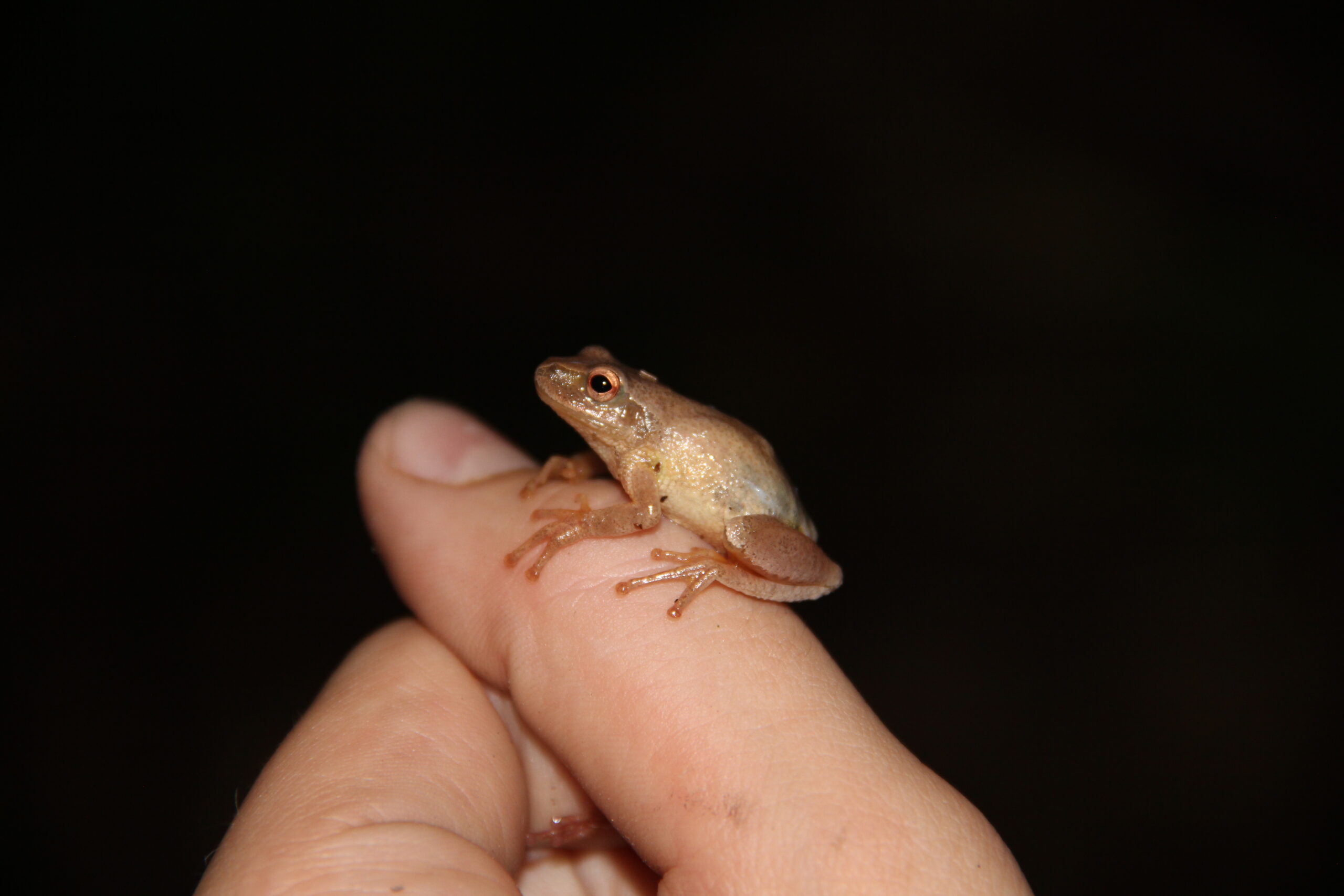One of my very favorite signs of spring is the chorus of spring peepers coming from the ditches along the road in front of Owl Acres. When the weather gets warm enough, and we’ve had some rain, they start their choruses, calling to prospective mates. When the dogs and I go for a walk, we hear them in the ditch. They stop peeping when we get close though.
They seem to appear by magic after spring rains turn everything to mud. So where have they been? And how can something that little make so much noise?
Spring peepers are chorus frogs. They’re also amphibians. They can, and do, live both on land and in water. Over the winter they have been hibernating. Last fall each little frog found a cozy place under a log or under the loose bark of a tree, and went to sleep. Temps get well below freezing in Iowa on winter nights, but the frogs don’t freeze. They have engineered a form of glucose-based antifreeze in their blood that keeps their cells from freezing.
Spring peepers are only about an inch long. They come in all kinds of colors from yellow and tan to olive green and dark brown, and are able to change their color to match their surroundings. They have a cross-shaped marking on their backs which gives them the second part of their Latin name (Pseudacris crucifer). The first part classifies them as chorus frogs because, like their close cousins, the males congregate in temporary or permanent ponds and sing all together in joyful chorus. They used to be classified in the genus Hyla (tree frogs) because they can climb trees and live in vegetation.
The males accomplish this singing by filling a vocal sac on their throat with air and then squeezing the air out, making the characteristic peep. They coordinate their peeping so they’re all in sync, and the peeps are rising and falling rhythmically. It takes a lot of energy to sing all night, peeping 15 to 25 times a minute for hours at a time.

Photo from Wikimedia.org by Reni Akande
Females don’t peep. They are attracted to the lustiest singers. Some of the successful males don’t sing at all, though. Instead, they lurk on the edges of the group and intercept females as they move to their chosen peeper. Once a female is mated, she will lay up to 1000 eggs in little clusters attached to vegetation or debris at the water’s edge. In six to twelve days, the eggs will hatch into tadpoles with gills and long tails. They feed on algae and plankton in their watery world while they work on developing lungs for a land-based adulthood.
These little frogs are native to Iowa. When they’re not peeping or mating, they are looking for things to eat in the vegetation. They feed at night for the most part, catching insects like beetles, ants, flies and spiders. Adult Spring peepers have sticky toe pads that allow them to stick to and climb vegetation in pursuit of their prey. And they are very good at camouflage, blending into the vegetation.
Spring peepers can live for up to three years if they can first survive their tadpole stage. As tadpoles, they are tasty bites for just about everyone out there, and the vast majority never make it to adulthood. The lucky ones feed on algae and plankton in the water while they change from gill-breathing to lung-breathing. In about eight weeks, they can live on land, and are mature frogs by the end of the summer. Now, though, they become snacks for larger predators like birds, snakes, some mammals, and some large insects.
So how did they magically appear in the ditches? For millennia people believed in spontaneous generation. That is, the frogs just came out of the mud—no eggs, no tadpoles—just adult frogs spontaneously generated by or from the decaying material in a spring mud. Somebody finally studied the frogs and discovered their hidden lives in the trees and undergrowth, and in their winter hidey-holes. So much for spontaneous generation. Still, it does seem like magic on a warm spring day to hear them singing in chorus, verifying that spring really is here.
Feature photo from Wikimedia.org by Bennett Graff Alt text: A tiny frog about an inch long, sits on a person’s finger against a black background. Spring peeper.

3 comments
Love hearing them!
Glucose-based antifreeze, eh? Didn’t know that. I always wondered how they came back to life. Thanks, Karen. – Joe
They make a good hearing test, too. One of my sisters can hear them, the other can’t.